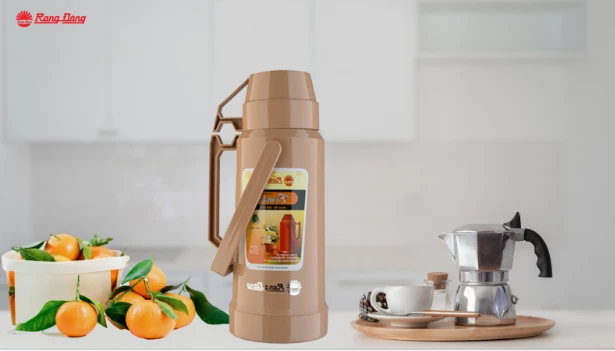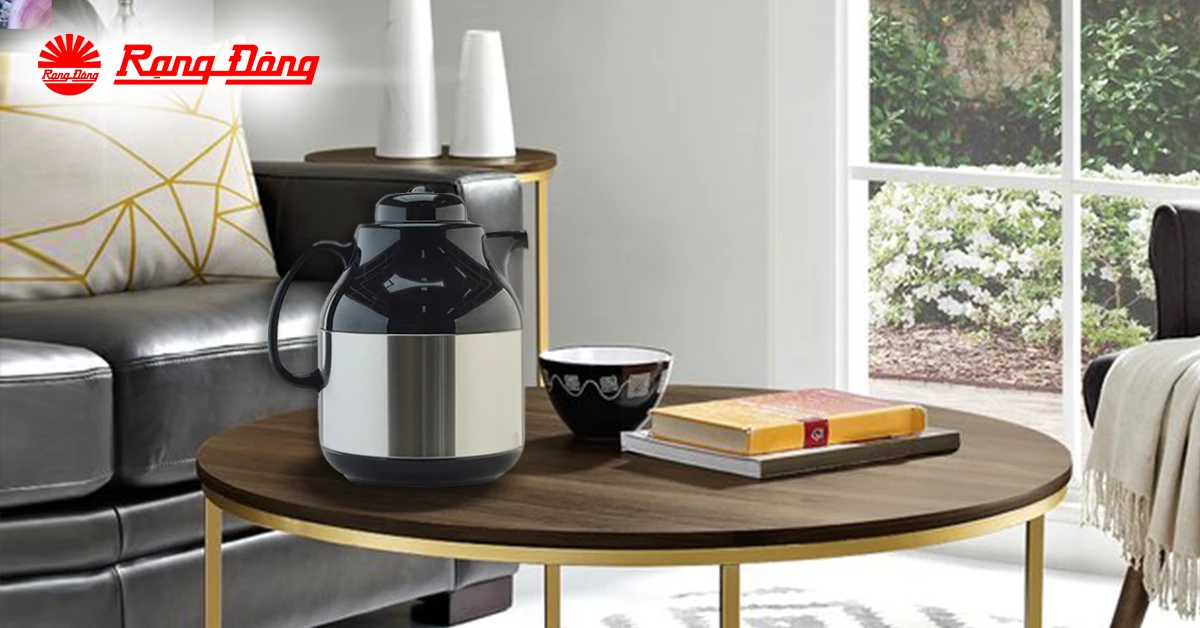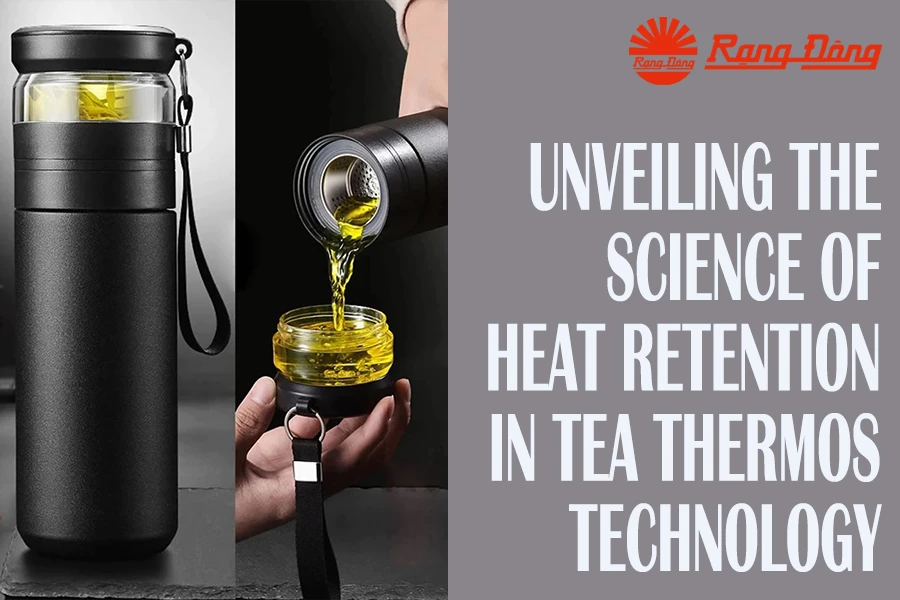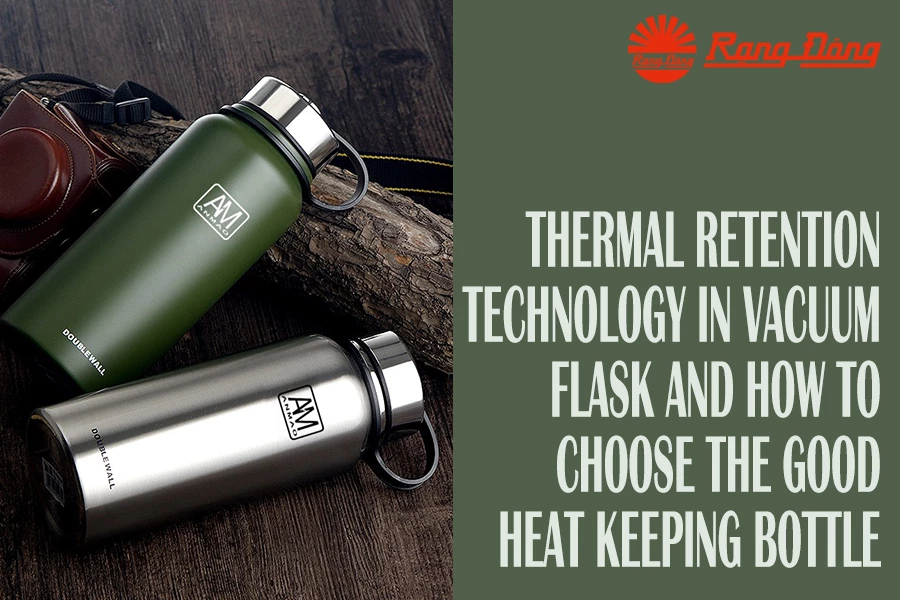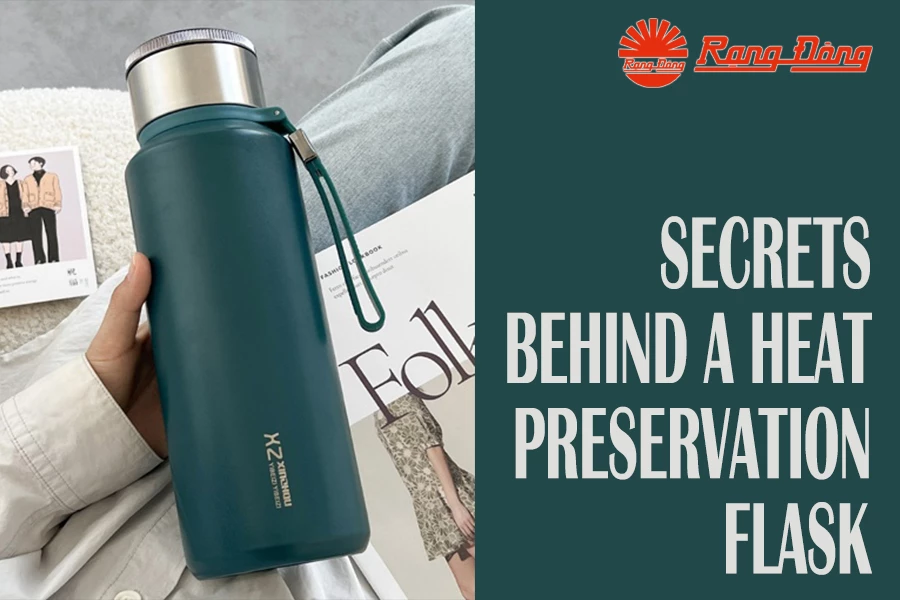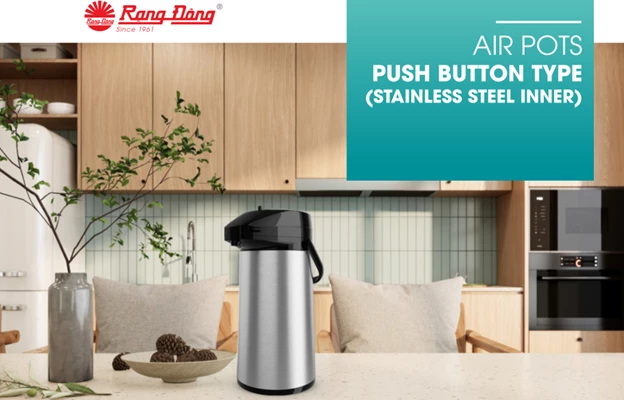Heatlock technology finds way in making good vacuum flasks
For making vacuum flasks, the technology is aimed at preventing heat loss via convection, conduction and radiation with the target that the best flask must keep hot liquids for 12 hours, and cold for 24 hours. Thanks to years of research and development, manufacturers of vacuum flasks have obtained an effective thermal retention method to apply on flask production. We will be looking at these achievements in the following article.
Heatlock technology has been familiar in the garment industry. But it can also be applied in many other fields, where products are designed to retain heat. Vacuum flasks are the representative of these products.
Heat can escape a vacuum flask in several ways. In convection, vapor escapes to the surrounding environment when the lid of the flask is opened. Next, via solid conduction, the heat inside is transferred to outside via the solid casing. Finally, in radiation the heat is transferred via electromagnetic waves emitted from the object.
The heat gets lost by the three ways shown in the scheme above.
In a vacuum flask, the heat loss takes place as illustrated in the photo below.
The heatlock technology is applied for vacuum flasks to retain the temperature of the liquid stored inside.
In order to reduce heat loss in vacuum flask, it is required to prevent heat release via conduction, radiation and transfer.
A closed lid, a tightened gasket with a proper small mouth can minimize the heat convection. In some types of teapots, manufacturers design a button to press and pour water out via a small spout, instead of opening the lid, which will help minimize convection.
In the application of heatlock technology for vacuum flasks, an interesting but less known factor is the silver coating layers on the glass bottle. The inner surface of the outer glass bottle and the outer surface of the inner bottle once plated with silver can help prevent heat radiation.
Let’s imagine that electromagnetic waves take heat to escape, but when they encounter the 2 silver layers, they are reflected back in. Most of the electromagnetic waves is kept inside the glass bottle, while only a small portion is leaked.
Vietnam's manufacturer Rang Dong provides various flasks effectively supported by the heatlock technology.
Finally, heat conduction transferring via solid objects can be reduced by using a good casing that contains the glass bottle. A vacuum gap inside the glass bottle can minimize the heat loss. A good vacuum flask often is structured by five thermal layers. Please note this point when choosing a flask with a long heat retention capability.
Tips on choosing a good vacuum flask
In order to pick a flask with good heat retention, consumers need to consider the following 5 points.
1. Trusted brands: Look for the brands made by prestigious manufacturers or distributed by reputable companies. Consumers should only buy items at original websites or trusted agencies.
2. Read carefully the information on the product label. A flask designed with an effective heatlock technology can keep hot liquids for 10-12 hours, and cold for 20-24 hours. Good suppliers often provide 2-year or 3-year warranty.
Thermos is a famous brand, supplying high-quality stainless steel bottles.
3. Reviews by highly influenced people (KOCs, KOLs) about product performance can help us choose suitable items.
4. Check out customers’ reviews, comments and assessments of the heatlock technology and other properties. Remarks by those who have used the products are useful as we seek to buy our own flask.
By following the steps described above, customers should have sufficient knowledge of the heatlock technology, its application as well as be able to choose a good vacuum flask.
Should you have any questions or request a quotation of Rang Dong products, please send us an email to: export@rangdong.com.vn.
Websites: en.rangdong.com.vn and vacuum flask.rang dong.com.vn.

